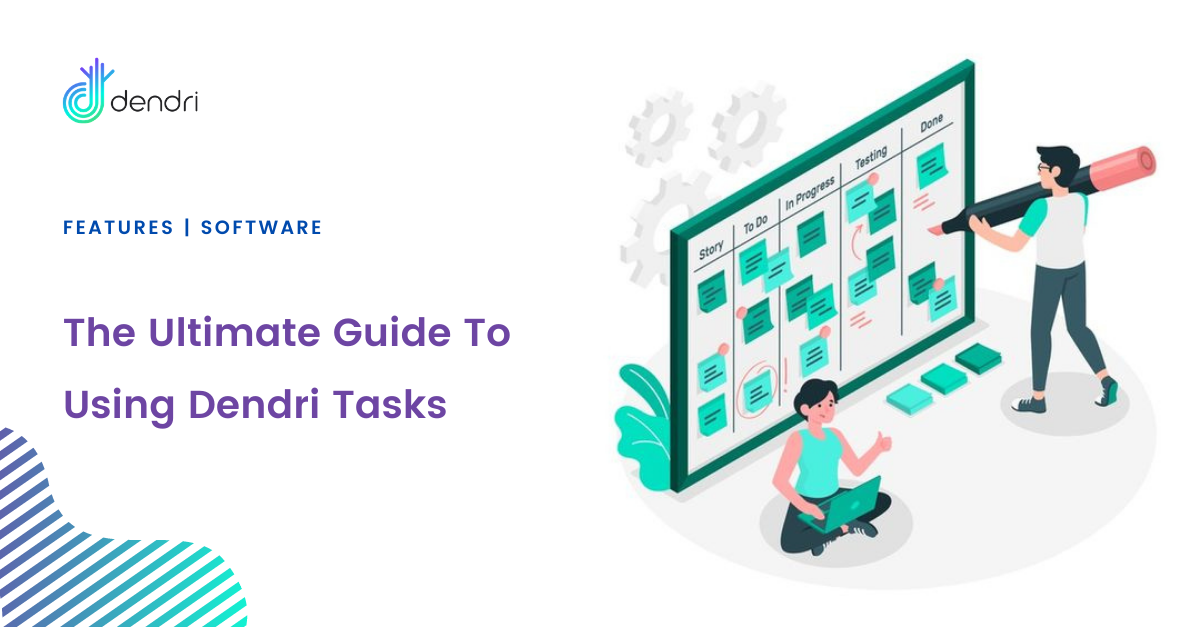
Task management is why I set out to build Dendri. After years of using and trying many practice management solutions, I realized that tasks are handled poorly across the board. The problems with tasks were clear:
Most task management solutions focus on the date a task is due, but don’t allow grouping by type or importance.
Most solutions don’t allow multiple stakeholders to share tasks or provide adequate communication. None of them provide a clear ownership.
Even when tasks can be organized, it is difficult for individual users to organize their tasks based on their own workflow and best organizational practices.
But we all have different brains. I struggle with a few limitations that I choose to consider superpowers, and those superpowers shape the way I view and organize my world. A list of tasks even with “low, medium, high” priorities just doesn’t help me understand what I need to work on next. It’s hard to even call that “task management.” So, I wanted to solve all of these by building a practice management system that put tasks first and freed individuals to organize them the way it made sense for their brain while still being able to speak a single language with their teams.
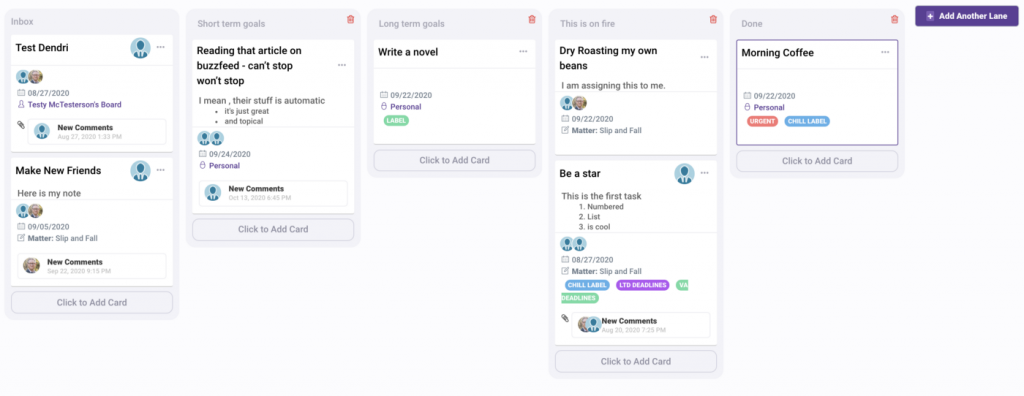
Grouping
We tackled the first problem by borrowing from the kanban board style of task management found in apps like Trello, Jira, Asana and other project management apps. But we didn’t stop with that.
In Dendri, every matter (or project) has its own Kanban board where all tasks are added. This is a shared space that everyone on your team can see. The columns can be free, meaning that any user can add columns based on the needs of the file. Or columns can be fixed. You can define columns based on the type of matter if you know what you’ll always need.
User Dashboard
But, we took task management a step further by also duplicating the task onto the matter’s history view. The history view is a rich table that contains every item related to that matter: Tasks, documents, notes, and events. These can all be labeled and filtered. So, if you wanted to see all items related to “trial prep” you could filter for that label. Then, see your key deadlines, important tasks and related documents. If you wanted to view all medical records, you could run that filter and see what was requested, what was received and any memos related to those records.
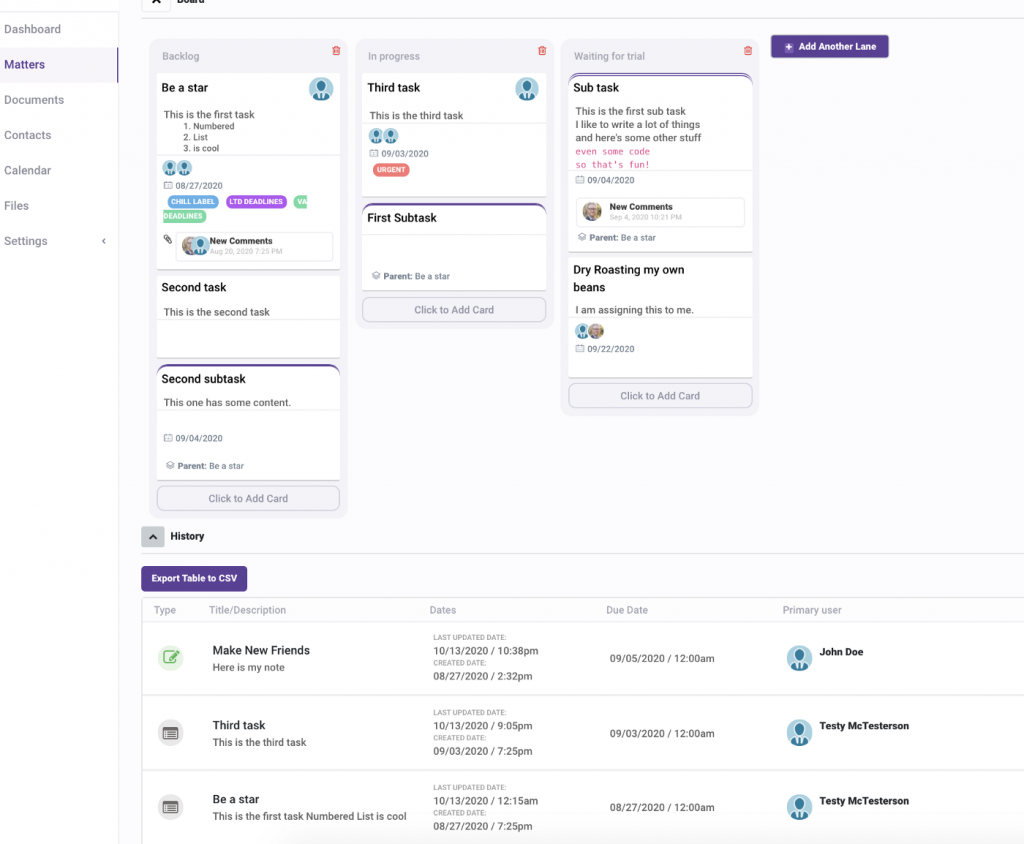
By duplicating tasks on both the visual Kanban board and the history, you have additional ways to manipulate your data. Unlike the Kanban board, the list will let you sort a traditional collection of due dates. And, you can export anything on the history to a csv if you need even more flexibility.
Subtasks for cleaner task management
All tasks can also have subtasks, which can be worked on individually. But, a series of tasks and related subtasks can be navigated within the task window with a simple tabbed interface. Tasks and subtasks are great targets for automation. In short, automation lets you to create a series of tasks with triggers based on a single input.
This split view means you can work visually with your tasks. You can organize them by priority or type while still keeping on top of your deadlines. Filters can be toggled and persist, so you can set up views with complex criteria. All assigned tasks with deadlines sync to your calendar.
So, with these three views: Kanban, History List, and Calendar, you can manipulate and work however it makes the most sense.
Ownership and Communication
None of this helps us work together with rich content. That’s why we tackled this with a set of global expectations both on the task face and in the modal.
All tasks have the ability to not just assign multiple users, but also to have a primary user. This is the owner of the task. A task doesn’t have to have an primary user, but it’s a best practice. It tells the team “this is the person who needs to take the next action.”
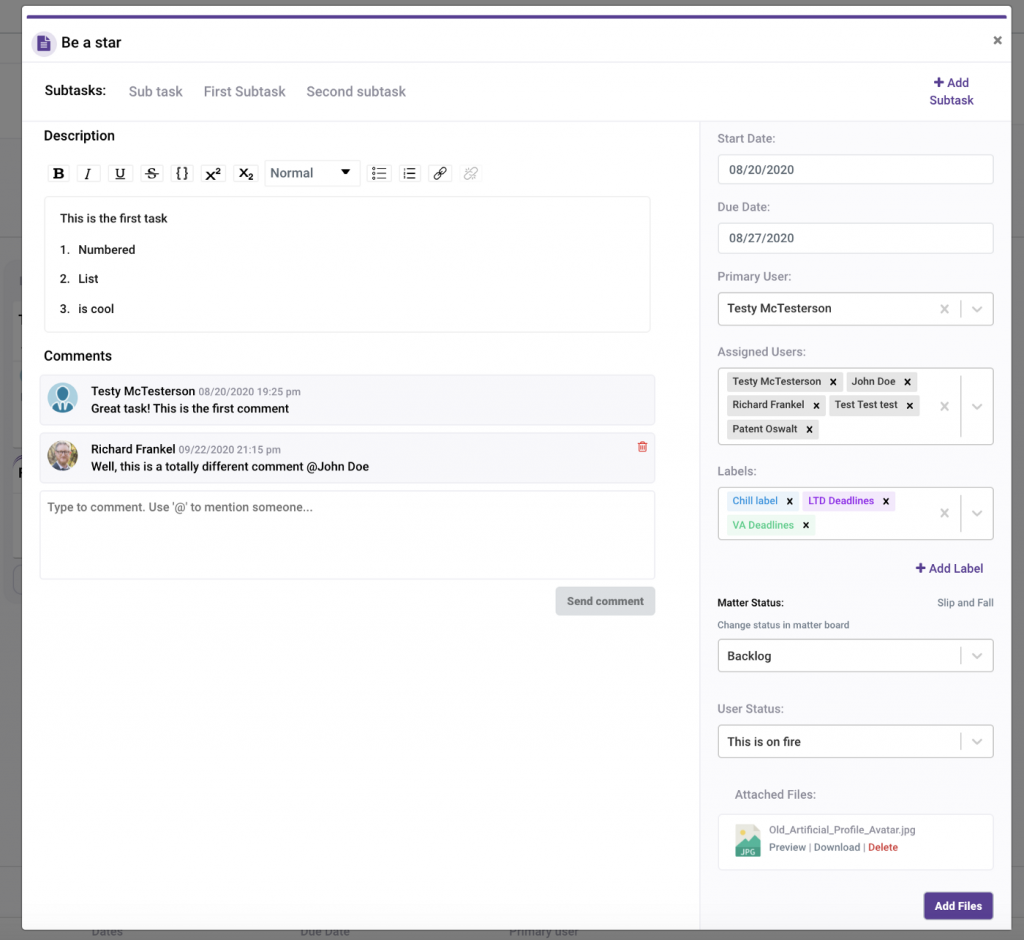
Additionally, all tasks have a comment section with mentions that surface the comments on a user’s dashboard. This helps teams work together and with the things they have to do and things they need to know. While it’s not quite realtime like slack, it offers an additional layer of communication to keep the team moving forward.
Individual Task Management Workflows
The matter board offers a shared view of where tasks are in progress. But, it’s not great to have to visit each matter every time you want to figure out what to do. So, Dendri aggregates all of your assigned tasks onto your dashboard. The dashboard mimics some of the features of a matter. Specifically, it includes both a board and a history view. The key difference: on your dashboard, all assigned tasks appear in your inbox and you can organize your board how you want.
All of your tasks across all matters come into the inbox and you can set up whatever columns make sense. So, you can organize your workflow in whatever way you like. And, so can every other member of your team. In the task you’ll see where the task is on your dashboard. We also show the location of the task on the matter board. You can move the task in either view from here. So, you finish a task, but other people will still have to take the next steps. Or, it may be time to mark that task done for everyone. Either way, there’s no jumping around needed.
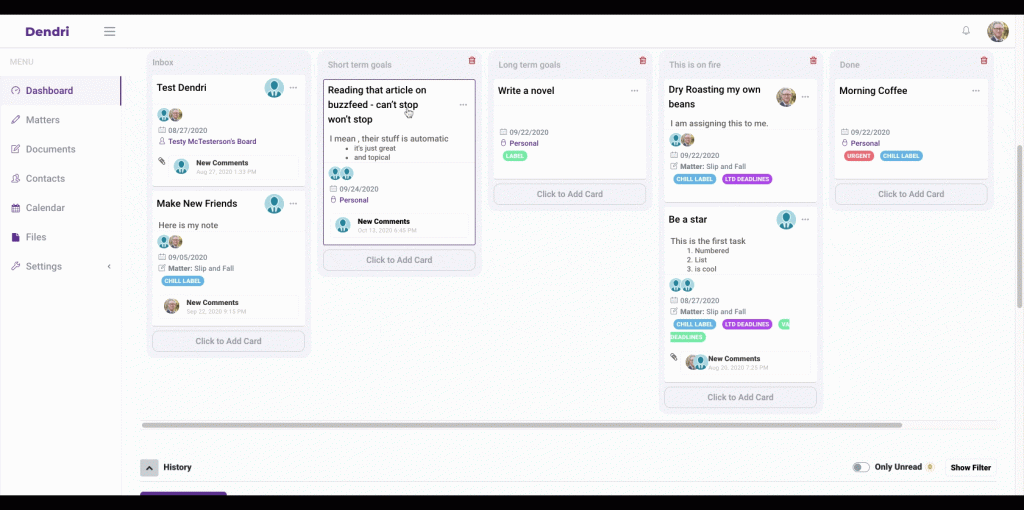
Personal task management
Many users request the ability to work with tasks across many boards in other project management apps. Users want to freely arrange those tasks without impacting placement on the original board. This request goes unanswered. We were able to do this because we treated this as a first order need and built Dendri from the ground up to promote individual agency in developing a personal workflow while still providing a single source of truth in the matter. You can also create a personal task on your dashboard and assign it to another user without ever touching a matter.
Team dashboards
Finally, you can create “Team” dashboards, that follow the same principle of aggregating tasks but add an additional shared view, so your marketing team, or your trial prep team can all work on a similar type of task together. You add tasks to a team board simply by assigning the “team,” just like you would assign a user.
We are a complete practice management app. But, users may come to us primarily for task management. We’re working on integrations with other popular practice management solutions as well as a pricing plan to let Dendri be where work gets done even if another solution is your primary database.
If you have questions or want me to go into more depth, don’t hesitate to reach out on LinkedIn or Dendri.com.
Related Posts
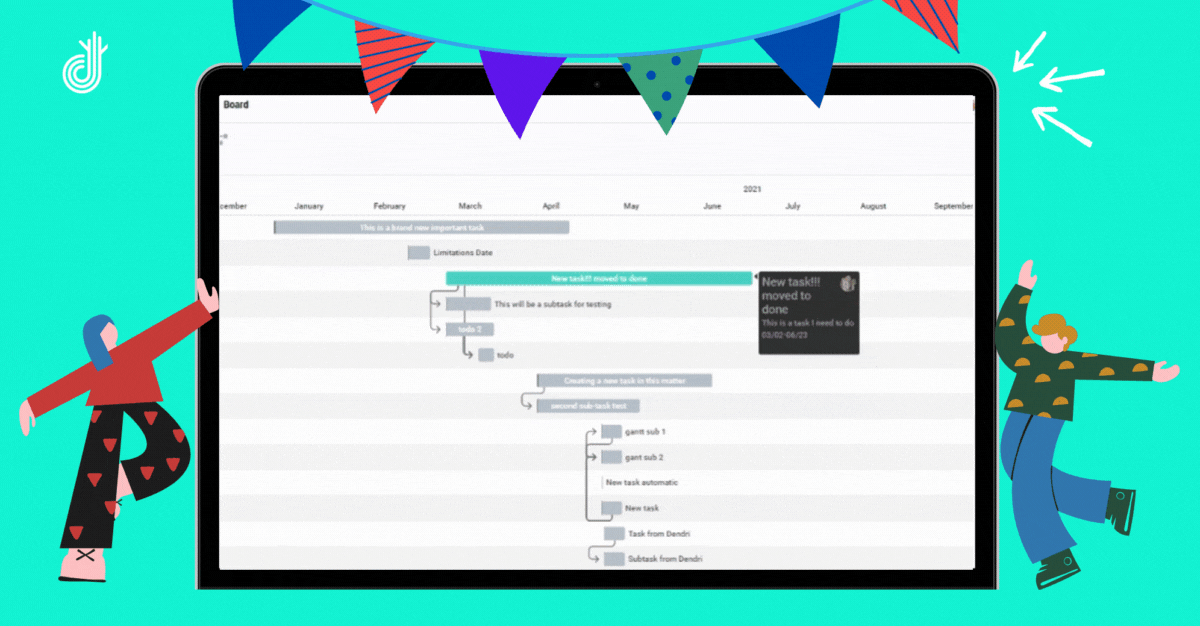
Elevate project tracking with Dendri’s new Gantt Chart
Gantt view: A new more visual way to track projects. Managing a large project is a bit like running a relay race. Everyone knows the most challenging part of a relay race is handing off…
- May 08
- 3 mins read

Finding the Best Project Management Software for Small Business
How Using Project Management Software Can Help Your Small Business Learn to Do More with Less When you are a small business, you need to work smart. You have limited money, time, and people power….
- Dec 21
- 6 mins read
Categories
Latest Post
Friday 7/2/21 updates
- July 2, 2021
- 3 mins read
Elevate project tracking with Dendri’s new Gantt Chart
- May 8, 2021
- 3 mins read
Personal Kanban: The Ultimate Tool to Improve Your Legal Workflow
- March 30, 2021
- 6 mins read
How To Unknowingly Sabotage Your Law Firm Employees
- March 17, 2021
- 4 mins read




